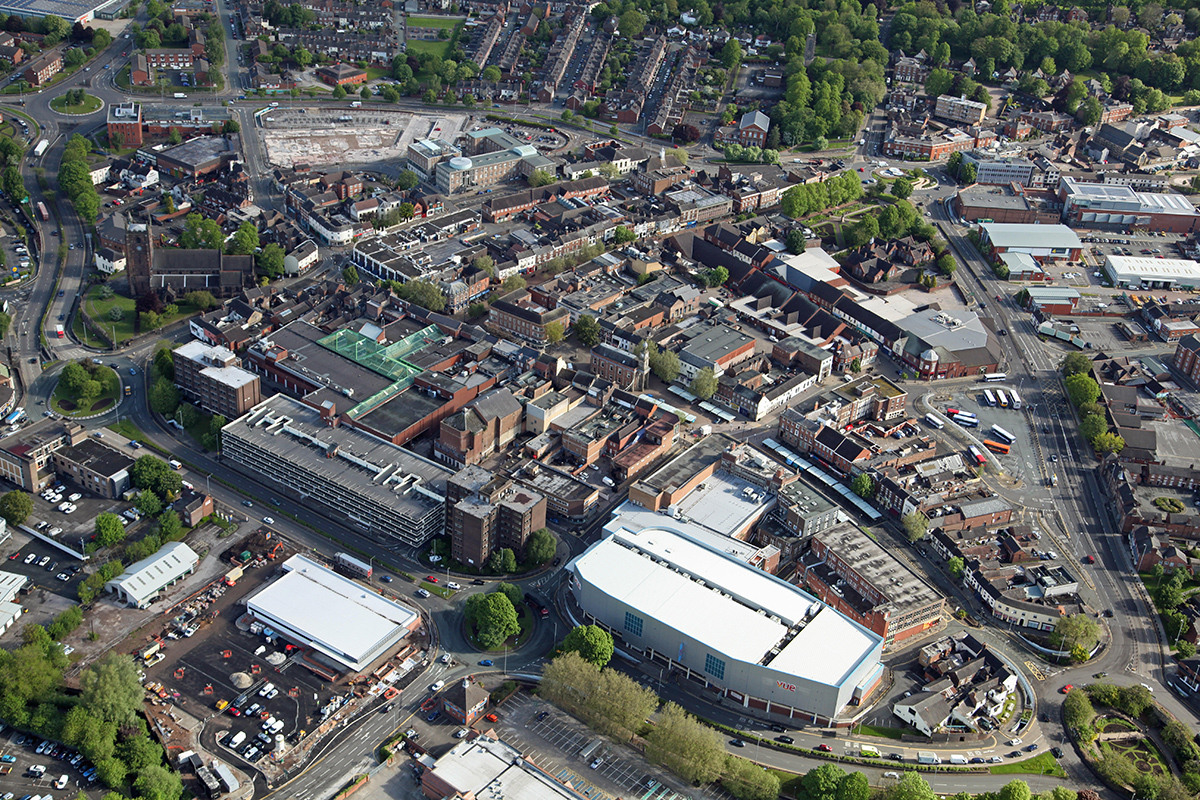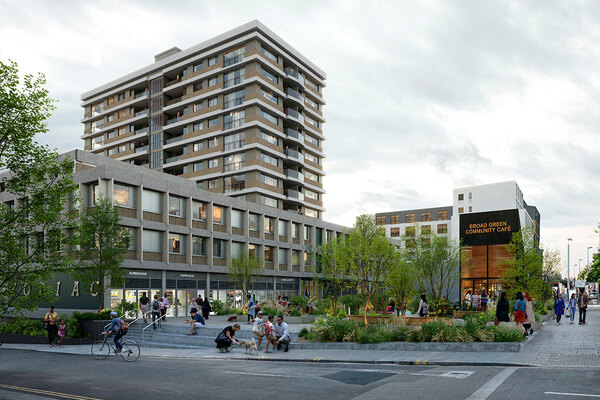Housing associations are building more energy-efficient homes – but is it enough?
Exclusive data from Inside Housing reveals a steep rise in the number of EPC Band A homes that housing associations are building. Gavriel Hollander speaks to landlords to find out how they are balancing building energy-efficient homes with affordable ones
The number of homes housing associations are building to Energy Performance Certificate (EPC) Band A has more than doubled in the course of a year, according to new data from Inside Housing. Of the nearly 52,000 new homes built in 2022-23, as recorded in our annual Biggest Builders survey, 1,416 achieved the highest energy efficiency rating.
This figure represents around 2.7% of new homes built by housing associations and is a significant improvement on the 607 homes that were built to Band A across the sector in 2021-22. Nevertheless, it is still some way short of the scale of energy-efficient building that policy experts say must take place if the UK is to achieve its net zero carbon ambitions.
The proportion of homes built to Band A by housing associations is also lower than that achieved by the wider residential building sector. According to latest government figures covering the three months to the end of June 2023, 4% of new dwellings in England achieved EPC A. Meanwhile in Wales – where the Welsh government has mandated that all new build social housing must meet EPC A standards by 2030 – the proportion was 14% over the same period.
Louise Hutchins, head of policy and public affairs at the UK Green Building Council (UKGBC), says the improved numbers from housing associations “show it is increasingly possible to build social housing to strong environmental standards that protect households from high energy bills and our planet from climate emissions”. However, she warns that “major policy changes are needed to bring this into the mainstream”.
New building standard
The government will be introducing the Future Homes Standard from 2025, which aims to drive down carbon emissions from residential buildings in England, but its exact specifications are yet to be agreed. Ms Hutchins says the government “must set the bar much higher so that all new homes are net zero carbon, affordable to heat, adapted to soaring temperatures and water shortages, and support the modernisation of our electricity grid as it decarbonises with renewable energy”.
While the difference between living in a home rated EPC A and B can be stark – with energy bills up to twice as expensive in the latter – the relatively low number of homes built to the highest standard demonstrates some of the difficult choices that housing associations are having to make when it comes to investment.
Last year, A2Dominion built the most homes that achieved EPC Band A. The London landlord built 115 to this standard out of 678 new completions in 2022-23 – just shy of 17%. A2Domnion has set a target of all its new homes being EPC B or better by 2030, but accepts that there are pay-offs between building to higher energy efficiency standards and delivering more low-cost homes.
EPC A homes built by housing associations in 2022-23
Housing association | 2022-23 completions | How many of these achieved EPC Band A? |
A2Dominion | 678 | 115 |
United Welsh | 137 | 103 |
ClwydAlyn | 149 | 102 |
Origin Housing | 117 | 100 |
Sovereign | 1,672 | 90 |
Wheatley Group | 644 | 80 |
Peabody | 2,399 | 79 |
Flagship Group | 750 | 64 |
Karbon Homes | 484 | 53 |
Stonewater | 963 | 41 |
Pobl | 362 | 38 |
Rooftop Housing Group | 173 | 37 |
Clarion | 2,032 | 29 |
Abri | 1018 | 29 |
Accent | 221 | 28 |
Midland Heart | 651 | 24 |
Calico Homes | 58 | 24 |
Yorkshire Housing | 502 | 23 |
BPHA | 222 | 23 |
MHS Homes | 94 | 22 |
Maryhill Housing | 22 | 22 |
Vivid | 1,390 | 21 |
Citizen | 630 | 21 |
Curo | 176 | 21 |
Sanctuary | 1,269 | 19 |
Choice Housing Ireland | 299 | 18 |
Plymouth Community Homes | 121 | 16 |
Platform Housing Group | 962 | 16 |
Fairhive Homes | 197 | 16 |
Ocean Housing | 110 | 14 |
LiveWest | 1,149 | 13 |
Alliance Homes | 159 | 13 |
Wakefield & District Housing | 337 | 12 |
Optivo | 1,089 | 11 |
Gentoo | 239 | 10 |
Hightown Housing Association | 530 | 10 |
Westward | 69 | 10 |
Housing 21 | 289 | 8 |
Torus | 679 | 8 |
Thrive Homes | 57 | 6 |
Connexus | 211 | 5 |
Saxon Weald | 46 | 4 |
Broadland Housing | 191 | 3 |
CHP | 293 | 3 |
Metropolitan Thames Valley | 657 | 2 |
The Guinness Partnership | 814 | 2 |
Saffron Housing Trust | 124 | 2 |
Longhurst Group | 584 | 2 |
Bolton at Home | 263 | 2 |
Moat | 459 | 1 |
Thirteen Group | 435 | 1 |
Source: Inside Housing’s Biggest Builders survey
“Going forward, we’re working to increase the number of new homes that achieve an EPC A rating,” explains Malkit Sagoo, interim assistant director of property services at A2Dominion. “We know this will be challenging and it’ll come with increased construction costs, so we want to make sure there’s a balance between meeting the demand for new homes and making sure they’re affordable for residents.”
Of the top 10 associations that built the most homes, none completed even 100 homes that achieved a Band A rating. Sovereign performed best out of this cohort, with 90 of its 1,672 homes rated A, representing just over 5% of its completions. Peabody’s 79 homes out of 2,399 represents 3.3%. But no other top 10 landlord built more than 1.5% of its new homes to the highest standard.
Tom Titherington, chief investment and development officer at Sovereign, says the 62,000-home landlord has its own Homes and Place Standard for new developments, which was introduced in 2021 and covers infrastructure and public space, as well as carbon reduction and energy efficiency measures.
Mr Titherington says that the association’s own standard means “there shouldn’t be a new build product that isn’t at least EPC B”, but insists that EPC ratings are a by-product of this, rather than a target. “What it will do is drive up the quality of the build, the quality of insulation, the fabric and heating. I’m pleased we’ve got the A ratings, but what we’re driving for is a better built product in terms of affordability and fabric.”
Meeting the criteria
Despite being the leading association builder overall, L&Q delivered no EPC A homes during 2022-23. However, the 120,000-home landlord only supplied data on EPC ratings on the homes it delivered through its in-house construction arm, Quadrant Construction, which this year built 432 of its 4,036 overall total. (All new builds must have an EPC assessment done – see box below.)
An L&Q spokesperson adds: “We mostly build homes in urban areas, where they are needed most, but where limited roof space reduces the opportunity for solar panels. In suburban areas, we have been focusing on bringing forward offsite construction methods, which achieve higher fabric efficiency and other environmental benefits, such as lower embodied carbon, faster build times and a reduction in waste produced on site.”
This statement speaks to a common issue when it comes to landlords attaining the top rating for their new homes. That is that the criteria for EPC A – which could include carbon-cutting measures such as rooftop solar PV – are often hard to meet in areas of dense housing, such as cities, and where affordability is a factor.
What is EPC and how is it calculated?
Energy assessors must carry out analysis of the energy and environmental performance of all new build homes. They use the Standard Assessment Procedure (SAP) to score the home, then depending on that score, the home will be given a rating on the A to G scale. This is based on the energy residents are projected to use, as well as projected carbon emissions. An A-rated home would be well insulated and might have solar panels or a heat pump.
These Energy Performance Certificates (EPCs) are also needed before a home can be rented out or sold.
English building regulations do not require new homes to hit a specific SAP score or achieve a certain EPC band. This means that the changes coming to English and Welsh building regulations – the Future Homes Standard – cannot be easily translated into homes reaching a certain SAP score or a certain EPC band. However, the new standard aims to reduce emissions from new homes by 75% by 2025, at which point these homes will also not be able to connect to gas. Scottish proposals would see a 75% cut in emissions by 2030, with all new build homes required to use zero-carbon heating systems from 2024. All social housing in Wales is meant to reach EPC Band A by 2030.
Aster Group, for example, built just five homes that met the criteria for Band A, out of more than 1,300 new builds. Amanda Williams, chief investment officer at the 36,000-home association, insists that it is still “committed to lowering our carbon footprint and protecting the biodiversity of our communities”, but adds that Aster – like most housing associations – must make difficult decisions when it comes to spending.
She says: “EPC A homes cost more to build, and we must always balance our investment in sustainability with the growing demand for new affordable homes.”
Rooftop Housing Group is an example of a landlord that bucked the trend by completing fewer homes to EPC A than in the previous year. While in 2021-22, more than half of its 116 new builds met the highest criteria, this time only 37 out of 173 achieved an A – although this proportion (21%) is far higher than the national average.
David Hannon, its executive director of development, says the lower number is down to Rooftop acquiring a greater proportion of Section 106 properties, over which it has less control when it comes to build standards.
“Local planning requirements are driving the As. There will be a bit of internal drive as well to do that, but housing associations are big machines to turn around”
With the Welsh government stipulating that all new social homes must be rated EPC A by 2030, it is perhaps unsurprising that Welsh associations occupy spots two and three on our list (see table). United Welsh completed 103 out of its 137 to Band A, while ClwydAlyn achieved the rating on 102 out of 149 new homes.
Lynn Morgan, executive director of development at United Welsh, says the board’s decision to try to build entirely to EPC A, as well as to take all its homes off gas, was made three years ago, prior to the Welsh government’s directive. “It was a business decision to invest in properties now rather than have to do it later,” she explains. Overall, United Welsh says it has invested around an additional £2m to get its homes to EPC A, although some of this will be offset by government grants.
Richard Lupo, a sustainability consultant and managing director at SHIFT Environment, believes that the sharp increase in the number of Band A homes achieved is driven by a greater emphasis on energy efficiency from planning authorities. “Local planning requirements are driving the As,” he says. “There will be a bit of internal drive as well to do that, but housing associations are big machines to turn around.”
Whatever the drivers, the importance of building homes that are as energy efficient as possible in the face of an ongoing cost of living crisis and climate emergency will only grow.
Sign up for our asset management newsletter
Already have an account? Click here to manage your newsletters
Sign up for the Social Housing Annual Conference and Inside Housing Development and Regeneration Summit
New for 2023, the Social Housing Annual Conference is joining forces with the Inside Housing Development and Regeneration Summit.
Join 600 attendees with a shared vision of planning and funding the strategic future of their business and the delivery of quality, affordable homes. If you work within a leadership or development role in the housing sector then this is the must-attend event of the year.













